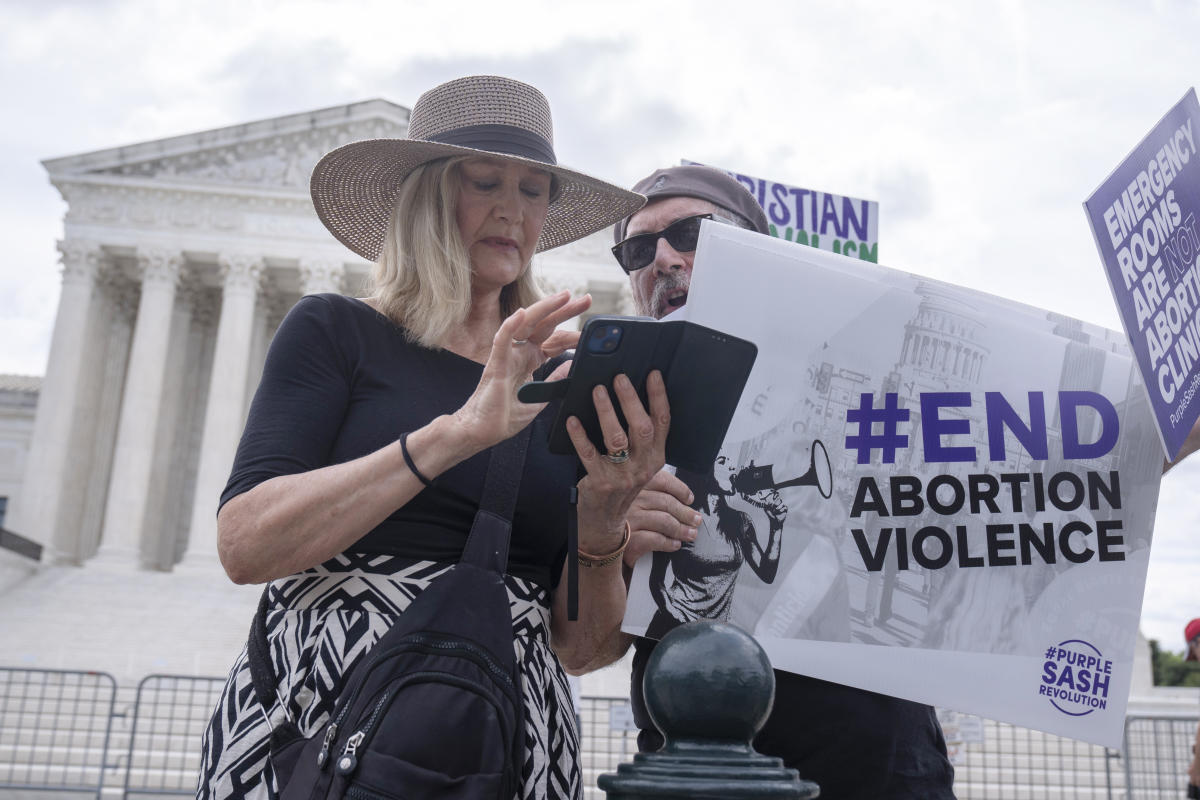WASHINGTON (AP) — The U.S. Supreme Court on Wednesday declined to rule in the debate over whether federal law requires hospitals to stabilize pregnant patients with emergency abortions, despite the state’s Supreme Court ruling that Idaho can perform abortions in medical emergencies even with state restrictions.
The court issued a 6-3 procedural ruling, leaving important questions still open about whether states can ban doctors from performing emergency abortions that save a woman from serious infections or organ loss.
Health and legal experts say Thursday’s order that divided the Supreme Court’s conservatives does nothing to protect pregnant women in other states with strict abortion bans, where state bans could conflict with a federal law that the Biden administration says requires emergency abortions.
“The decision released this morning by the Supreme Court sheds no light on how that conflict will or should be resolved,” said Joanne Rosen, co-director of the Johns Hopkins Center for Law and the Public’s Health.
Here’s a look at emergency abortions in the U.S., the federal law the Biden administration says requires hospitals to provide them, and why the debate over the legality of those abortions is far from resolved.
How often do pregnancies threaten a woman’s health?
Each year, approximately 50,000 women in the US develop life-threatening complications during pregnancy, including sepsis, bleeding or loss of reproductive organs.
In rare cases with some of these complications, doctors may terminate the pregnancy, especially when there is no chance of a fetus surviving. For example, if a woman’s waters rupture during the second trimester, a condition known as preterm premature rupture of membranes, the fetus may not be viable and continuing the pregnancy may put the patient at risk of developing sepsis, a infection that can be fatal.
According to the Centers for Disease Control and Prevention, sepsis and blood loss are two of the most common causes of maternal death in the US. Last year, almost 700 women died during pregnancy, childbirth or immediately after childbirth.
Idaho doctors say at least six pregnant women have been flown to other states for emergency treatment since January. In January, Idaho’s strict abortion ban, which allows doctors to perform abortions if a woman’s life, but not her health, is in danger, went into effect.
What protections does federal law provide to pregnant emergency room patients?
The law, called the Emergency Medical Treatment and Active Labor Act, or “EMTALA,” requires emergency departments to offer a medical exam when you check in to their facility. The law applies to nearly all emergency departments — all departments that accept Medicare funding.
These emergency rooms are needed to stabilize patients if they are in a medical emergency before being discharged or transferred to another hospital. And if the ER does not have the resources or staff to properly treat that patient, staff members must arrange a medical transfer to another hospital after confirming that the facility can accept the patient.
Hospitals that violate federal law risk their Medicare funding and could face steep fines from the federal government.
Why are Idaho and the U.S. Supreme Court involved?
Since the Supreme Court struck down the constitutional right to abortion, Democratic President Joe BidenThe US government has told hospitals that abortion is considered stabilizing care requiring EMTALA.
The Biden administration has sued the state of Idaho over its strict ban on abortion. Exceptions were only allowed to save a woman’s life. According to the Biden administration, the law prevented emergency room doctors from performing an abortion if a woman needed one in a medical emergency.
Idaho attorneys argued that there is no conflict between the state law and federal law because Idaho allows doctors to perform an abortion if the woman’s life is in danger.
On Thursday, the justices reinstated a lower court order that had allowed Idaho hospitals to perform emergency abortions to protect the health of a pregnant patient, saying the U.S. Supreme Court intervened too quickly in the case.
What does the ruling mean for other states with strict abortion bans?
Very little – for now. The U.S. attorney general has said several other states have abortion bans so strict they could conflict with federal law. But the Supreme Court did not directly address potential conflicts between the laws in its ruling.
Texas, for example, is suing the federal government over its guidelines that say hospitals must offer abortions to women who need them in medical emergencies.
The 5th Circuit Court of Appeals ruled against the government in January, finding that EMTALA does not require Texas hospitals to perform abortions in emergency rooms. The Justice Department has appealed the decision.
“The availability of abortions in medical emergencies in Texas will remain extremely limited,” said Rosen of Johns Hopkins.
Doctors in states such as Florida and Missouri have said they have been afraid to treat abortion patients since the ban went into effect. The federal government also found that hospitals in those states violated EMTALA in some cases where pregnant patients were turned away or improperly treated.
On Thursday, Judge Ketanji Brown Jackson argued in a dissenting opinion that the court should have settled the debate for both doctors and patients.
“As long as we refuse to declare what the law requires, pregnant patients in Idaho, Texas and elsewhere will pay the price,” Jackson said.
Can the Supreme Court revisit this issue?
Yes. Now that the Idaho case has been remanded to the lower court and the Texas case is on appeal, it is an issue that could soon return to the Supreme Court.
And six judges have now weighed in.
The court’s three liberal justices — Jackson, Elena Kagan and Sonia Sotomayor — said in their decision that federal law says women should be able to get abortions in medical emergencies, despite state bans. Three conservative justices — Samuel Alito, Neil Gorsuch and Clarence Thomas — disagreed that the federal law is so specific, pointing out that it is written so that hospitals must treat the “unborn child.”
That leaves Justices Amy Coney Barrett, Brett Kavanaugh and John Roberts.
“They don’t want to have to make a decision right now,” said Rob Gatter, a law professor at St. Louis University and an expert on health policy. “That’s a recipe for saying, ‘Somebody else has to figure this out first, you get it wrong first, you’re going to try this the first time, and let me see how this goes.’”







